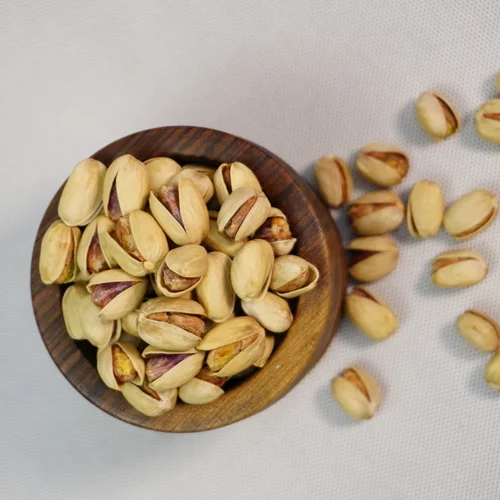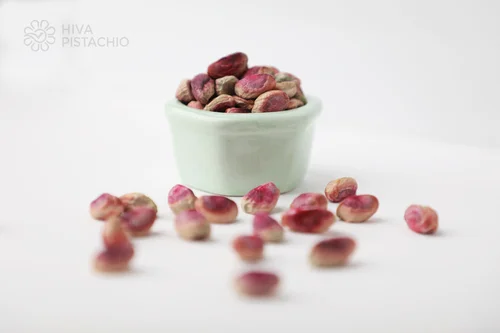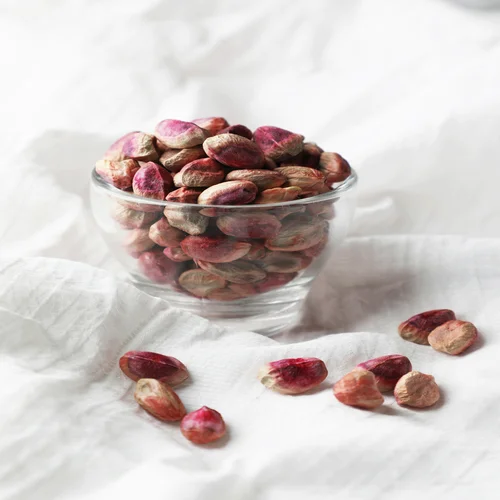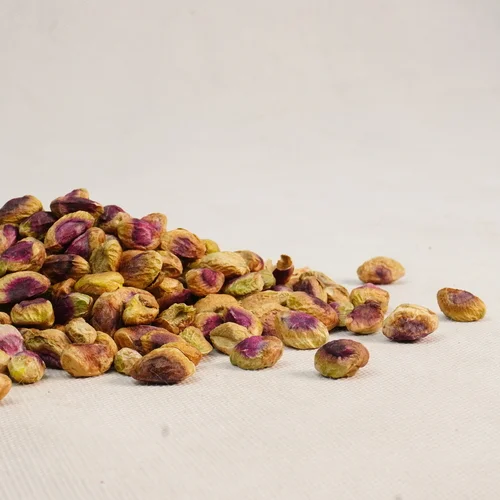How to measure pistachio quality in international trade

In the competitive world of pistachio export and import, quality is everything. Whether you source pistachios from Iran, the United States, or Turkey, international buyers rely on strict standards to assess the value, safety, and usability of the product. Understanding these quality criteria is essential for traders, wholesalers, and food industry buyers.
Here we take a comprehensive look at how to measure pistachio quality in international trade:
Size and number of beads per ounce (number/ounce)
Pistachio size is one of the most important quality indicators, measured by the number of pistachios per ounce:
18–20 pcs/ounce→ Extra large (Akbari)
21–24 pcs/ounce → Large (Ahmad Aghaei)
26–30 pcs/ounce → Medium (Fandoghi)
Larger nuts are usually preferred in premium markets and command a higher price.
Shell Type: Open-Mouth vs. Closed-Mouth
Natural open-mouth pistachios: They are preferred in most international markets due to their appearance and ease of consumption.
Mechanically peeled pistachios: A cheaper alternative mainly used in food processing.
Closed-mouth pistachio: Usually sold for the production of kernels.
Exporters should clearly specify the type of shell opening, as this directly affects pricing and intended use.
Kernel Color and Appearance
Buyers evaluate the brightness and greenness of the kernel, as well as its uniformity. Brighter green kernels, such as grade A or S (super green), are highly valued in European and Japanese markets, especially for confectionery and premium products.

Foreign materials and shell integrity
International food safety standards (such as EU regulations, USDA, and Codex classifications) set limits:
Foreign materials (stones, shells, dirt)
Broken or cracked shells
Insect damage
A clean, intact batch signals professional harvesting and processing.
Aflatoxin level
Aflatoxin contamination is one of the most important quality factors. International regulations – particularly in Europe and Japan – impose very low tolerance levels (typically less than 10 ppb total aflatoxins). Iranian exporters use advanced sorting methods, UV screening and laboratory testing to ensure compliance with these regulations.
Moisture content
Humidity should not exceed 5 to 7 percent, depending on the destination market. Higher humidity levels lead to mold, mildew, and faster spoilage – major quality and safety risks in exports.
Flavor and aroma
Although more difficult to quantify, experienced buyers appreciate the nutty aroma and fresh taste of pistachios. Any sour, oily, or stale taste reduces the grade and marketability of the product.
Sorting and grading
Most pistachios are graded based on:
Size
Openness
Kernel color
Shell defects
Purity percentage
Common grades include AA, A, B, or Super Green, depending on country standards.
Certifications an0d complianc
To enter many markets, pistachios must comply with international food certifications:
ISO 22000
HACCP
BRC
Phytosanitary certificates
These documents give buyers assurance about quality control and regulatory compliance.
Packaging and labeling standards
Proper packaging helps maintain quality and increase credibility:
Vacuum bags or nitrogen bags
Food cartons
Clear labeling with harvest date, variety, origin and grade
Conclusion
In international trade, pistachio quality is not just about taste – it’s also about meeting measurable standards. For exporters, mastering these quality factors means access to premium markets. For buyers, understanding them ensures they’re receiving a safe, marketable, and profitable product.
Whether you are a wholesaler, importer, or food manufacturer, choosing pistachios that meet these international standards is key to your business success.
source: amazon




